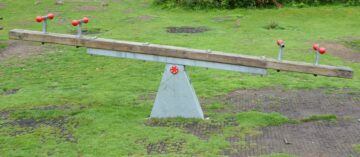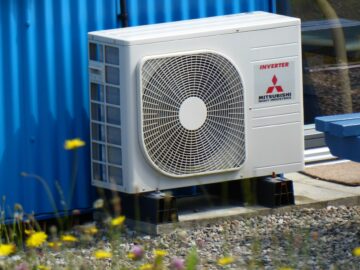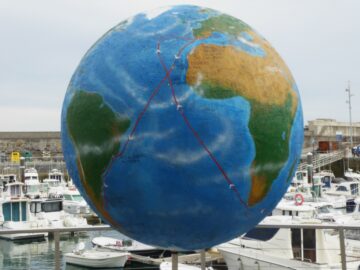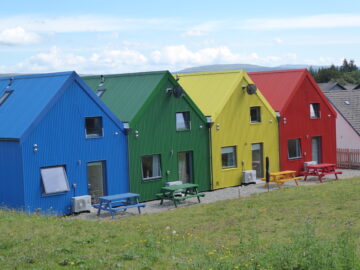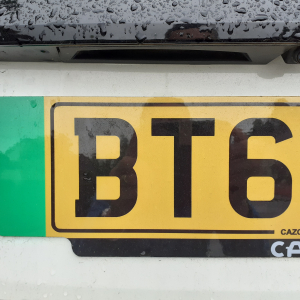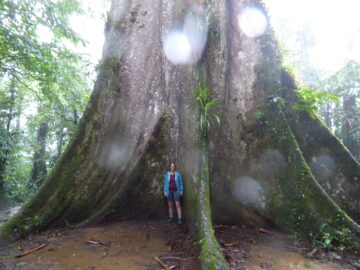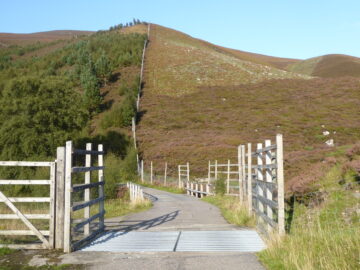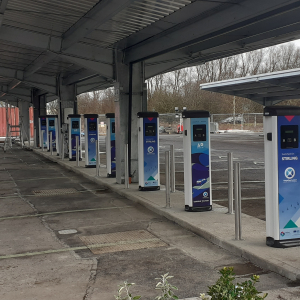
What are the implications of a rising sea-level? How will society react, what about nature?
This blog was inspired by a boat trip that I recently enjoyed to see the ‘sunken city’ of Kekova in Turkey. This is a major tourist attraction, with dozens of boats (gulets) congregating around the ruins every day. It is no Atlantis, but you can see some ruins at the water edge and the outlines of submerged structures. The land subsided here over 2,000 years ago, caused by a major earthquake.
The term ‘sea-level’ is rather misleading as the sea isn’t level at all. It is affected by waves and tides, storms, and by local atmospheric pressure. Expanding or contracting ice-sheets also affect sea level by influencing local gravity; and the huge weight of ice-sheets can lower or raise whole continents relative to surrounding sea-level. An additional local effect is that cities like Jakarta are sinking because of the volume of freshwater being extracted from the aquifer beneath it.
However, on average, global sea level is rising by 3mm per year. Last century this was mainly due to the increase in ocean temperatures (warmer water expands). Increasingly this is being added to by melting glaciers, ice caps and ice sheets.
Sea level has changed dramatically in the past due to the volume of water contained within ice sheets. The sea was 120 metres lower at the peak of the last Ice Age – hunter gatherers lived at times in the middle of the North Sea. We are still in a ‘mini-Ice Age’ with large ice sheets over Greenland and Antarctica. Scientists talk about the potential effect of Greenland’s ice sheet melting (7m), or the West Antarctic Ice Sheet (5m); but the reality is that much of the world’s ice is likely to begin to melt so the effect is cumulative. If all the remaining ice were to melt, sea level would rise by a further 70 metres. [this would relegate England’s highest mountain, Scafell Pike, from 978m to 908m, no longer over 3,000 feet high]. The real problem is that this process is virtually unstoppable – the Greenland ice sheet only exists in the current climate due to its huge depth/height built up when the climate was cooler, and this high altitude continues to keep the surface cooler. Already we have committed our planet to irreversible sea level rise for centuries, this will only get worse and worse.
Impacts
The impacts will vary from place to place. The most vulnerable places are low lying deltas and island nations. The UK has 20,000 km of coastline (Holland only has 450km to defend)! The effects will depend upon local geology and geomorphology, with bigger dangers affecting regions that are exposed to storms and the occasional tsunami.
- Erosion of soft rocks and movement of sand and sediments
- Cliff rockfalls
- Saltwater incursion inland, poisoning good agricultural land and contaminating freshwater supplies
- Damage, and ultimate destruction of coastal infrastructure, roads, railways, ports and buildings
- City sewage works become ineffective as they rely on gravity to remove the treated wastewater
- Contamination will seep into the sea from newly inundated coastal landfill sites.
These impacts can occur gradually, or suddenly during a violent storm that coincides with a high tide.
The inevitable outcome is that insurance companies will withdraw flood insurance making large areas off limits to mortgage loans. Houses will be abandoned and/ or the poor and dispossessed will move in creating marginal and vulnerable communities.
Adaptation
Of course, humans will try to adapt to rising seas, but this will become increasingly difficult and expensive:
- Working with nature to build natural flood defences such as growing mangroves
- Building hard infrastructure barriers from concrete or stone blocks from massive quarries will become a huge undertaking around the world
- Learn to live with occasional inundation by building houses on stilts/ floating cities, but these will be vulnerable to storms.
Unfortunately, these attempts will eventually be overwhelmed, whilst coastal nature, such as marshes and mudflats, will be squeezed between rising seas and man-made flood barriers. The cost of building flood defences will become astronomical. If flood barriers are built higher than sea level, then any freshwater ‘trapped’ inland has to be pumped up and out using huge amounts of energy.
Longer Term
- Refugee crisis from small islands, deltas and coastal cities
- Increasingly expensive coastal barriers eg a new Thames Barrier
- Limited budgets to repair damage to coastal infrastructure. Some harbours and roads will be damaged in storms and never be repaired
- Hard political and social decisions will have to be made to abandon certain areas,
- Coastal nuclear power stations will be shut down and expensive decontamination required to prevent radiation leaks.
I hope you are not thinking that you will be immune from these affects, as you don’t live near the coast? When Ice Sheets melt they release vast volumes of freshwater into the oceans. This will change the circulation and ocean currents creating further climate chaos across the world.
Conclusions
It is gross insanity for humankind to knowingly emit ‘carbon’ pollution that will cause sea level to rise. Unless a miraculous solution is found, then these problems are inevitable. Still, future tourist operators are going to have a field day advertising boat trips to explore the abandoned New York skyscrapers jutting out of a restless North Atlantic like enormous vertical icebergs.
As to the solutions – stop emitting carbon dioxide and start to drawdown excess carbon dioxide – we will need to reduce CO2 in the atmosphere to solve this problem.
If you like this blog, please share it with your friends and on social media.
Carbon Choices
Don’t miss my future blogs! Please email me at This email address is being protected from spambots. You need JavaScript enabled to view it. and I will send you each new blog as I publish them.
You might also enjoy my book, Carbon Choices on the common-sense solutions to our climate and nature crises. Available direct from me here. I am donating one third of profits to rewilding projects.
Follow me:
@carbonchoicesuk (twitter) @carbonchoices (Facebook) @carbonchoices (Instagram)
- SEO Powered Content & PR Distribution. Get Amplified Today.
- PlatoData.Network Vertical Generative Ai. Empower Yourself. Access Here.
- PlatoAiStream. Web3 Intelligence. Knowledge Amplified. Access Here.
- PlatoESG. Carbon, CleanTech, Energy, Environment, Solar, Waste Management. Access Here.
- PlatoHealth. Biotech and Clinical Trials Intelligence. Access Here.
- Source: http://www.carbonchoices.uk/index.php/blog/blog-50
- :has
- :is
- :not
- $UP
- 000
- 120
- 20
- 70
- a
- About
- across
- adapt
- added
- Additional
- address
- Advertising
- affect
- affected
- affecting
- affects
- age
- ago
- Agricultural
- All
- already
- also
- am
- amounts
- an
- and
- Antarctica
- any
- ARE
- areas
- around
- AS
- At
- Atlantis
- Atmosphere
- atmospheric
- Attempts
- attraction
- available
- average
- barriers
- BE
- because
- become
- begin
- being
- between
- bigger
- Blocks
- Blog
- boat
- book
- Budgets
- build
- Building
- built
- but
- by
- CAN
- caps
- carbon
- carbon dioxide
- Cause
- caused
- centuries
- Century
- certain
- change
- changed
- Chaos
- choices
- Circulation
- Cities
- Climate
- co2
- Coast
- coastal
- coincides
- committed
- Communities
- Companies
- contained
- continues
- contracting
- Cost
- course
- Creating
- crises
- crisis
- Current
- damage
- dangers
- day
- decisions
- difficult
- direct
- donating
- Dont
- down
- dozens
- dramatically
- due
- during
- each
- Earthquake
- Edge
- effect
- effects
- enabled
- energy
- England’s
- enjoy
- enjoyed
- enormous
- eventually
- Every
- every day
- excess
- exists
- expanding
- expands
- expensive
- explore
- exposed
- Feet
- field
- floating
- flood
- For
- found
- friends
- from
- further
- future
- get
- Global
- going
- good
- gradually
- gravity
- gross
- Growing
- Hard
- Have
- here
- High
- higher
- highest
- Holland
- hope
- houses
- How
- http
- HTTPS
- huge
- Humans
- hunter
- i
- ICE
- if
- immune
- Impacts
- implications
- in
- Increase
- increasingly
- inevitable
- influencing
- Infrastructure
- inland
- inspired
- insurance
- into
- island
- Islands
- IT
- ITS
- JavaScript
- jpg
- Keep
- knowingly
- Land
- large
- Last
- Leaks
- Level
- like
- likely
- limits
- live
- Loans
- local
- longer
- Low
- lower
- made
- mainly
- major
- Making
- massive
- me
- Media
- Middle
- might
- misleading
- miss
- Mortgage
- most
- Mountain
- move
- movement
- much
- my
- Nations
- Natural
- Nature
- Near
- Need
- never
- New
- New York
- newly
- no
- North
- North Sea
- nuclear
- Nuclear power
- occasional
- occur
- ocean
- oceans
- of
- off
- on
- ONE
- only
- operators
- or
- our
- out
- Outcome
- outlines
- over
- overwhelmed
- past
- Peak
- per
- Place
- Places
- planet
- plato
- Plato Data Intelligence
- PlatoData
- please
- political
- Pollution
- poor
- ports
- potential
- power
- pressure
- prevent
- Problem
- problems
- process
- profits
- projects
- protected
- publish
- Radiation
- railways
- raise
- rather
- React
- real
- Reality
- recently
- reduce
- regions
- relative
- release
- rely
- remaining
- remove
- repair
- required
- Rise
- rising
- roads
- RUINS
- SAND
- scientists
- SEA
- Sea level
- see
- send
- Share
- sheet
- Shut down
- Sites
- small
- So
- Social
- social media
- Society
- Soft
- solution
- Solutions
- SOLVE
- some
- start
- Stations
- Still
- STONE
- Stop
- Storm
- storms
- structures
- subsided
- such
- Surface
- Surrounding
- Talk
- term
- than
- that
- The
- the UK
- The West
- the world
- Them
- then
- These
- they
- Thinking
- Third
- this
- Tide
- tides
- times
- to
- treated
- trip
- try
- Tsunami
- Turkey
- Uk
- ultimate
- unstoppable.
- upon
- using
- vary
- Vast
- vertical
- View
- virtually
- volume
- volumes
- Vulnerable
- Warmer
- was
- Water
- waves
- we
- weight
- were
- West
- What
- when
- Whilst
- whole
- will
- with
- withdraw
- within
- works
- world
- world’s
- worse
- would
- year
- years
- york
- you
- Your
- zephyrnet



